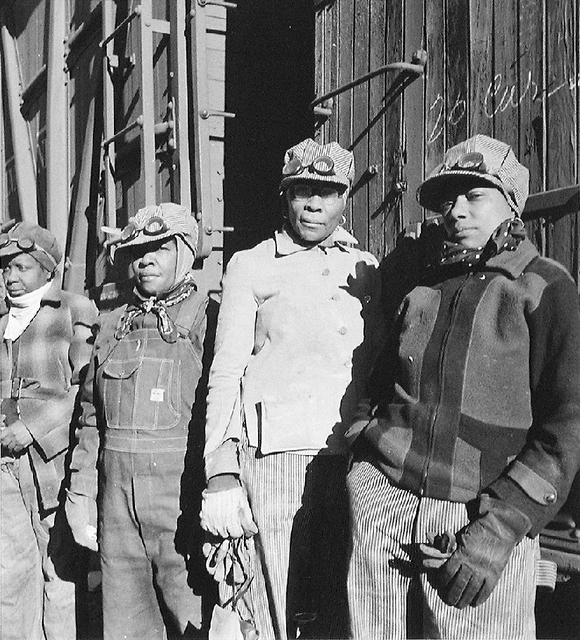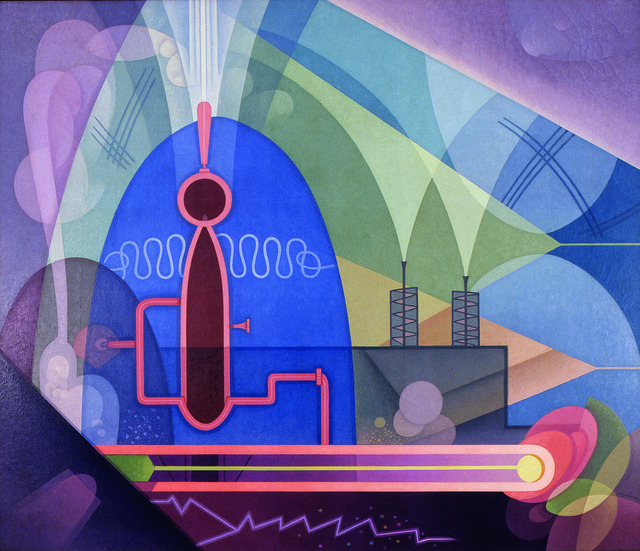The Great Depression left many marks on the U.S. in the history books and the hearts and minds of the people. It also left a more physical trail: memories etched into sides of buildings or captured in photographs. With the hard times came desperate measures and President Franklin Delano Roosevelt did what he felt was best by creating the New Deal, paving the way for art on a scale we’d never seen before and haven’t since.Now, 75 years later, Great Depression art can be found around New Mexico in murals, crafts and architecture funded through New Deal programs. The Public Works of Art Project was created by President Roosevelt in 1933 to relieve poverty and create a sense of national expression by paying fine artists and artisans a decent wage to practice their crafts. The wages—equal to a plumbers’ pay of $23 a week—mark the first and only time the U.S. government has put so much monetary support into the arts, says Robert Ware, the curator of For the Greater Good: New Deal Art in New Mexico, 1933-1943, now on display the UNM Art Museum.Thousands of otherwise out-of-work artists began producing pieces to fill government buildings, universities and public schools. Furniture makers, photographers, painters, potters, weavers—all treated with the same value as blue-collar workers—were funded by the federal government until the U.S. entered WWII in the early ’40s.Politics aside, the New Deal programs helped keep alive the art traditions we identify as New Mexican, says Ware, whose MFA studies heavily focused on New Deal photography. Without the Public Works of Art Project, the Works Progress Administration and others, the practice of making items like Native American jewelry, pots and weaving, and traditional Spanish crafts could have been lost as artists pursued other trades to keep food on the table.Given this deep-rooted connection, Ware and the UNM Art Gallery staff decided to host New Deal artwork in an exhibit to commemorate its 75 th anniversary. New Mexico had nearly 200 artists producing work during the New Deal, a significant number for the new state’s small population. The amount created gave Ware a lot to choose from when building For the Greater Good . The exhibition includes pottery by Maria Martinez of San Ildefonso, documentary photos from the Farm Security Administration by John Collier, Jr. and Russell Lee, and prints by Gene Kloss, just to name a few. Ware had a much easier time selecting a series of murals from the UNM Art Museum collection made by Raymond Jonson, the benefactor of UNM’s Jonson Gallery.When the Public Works of Art Project was announced, Jonson proposed a series of mobile murals for UNM’s library—now the Arts Annex Building—painted by himself and Santa Fe-based artist Willard Nash. The project was selected and the murals hung until Zimmerman Library was built in 1938. Only Jonson’s mural Cycle of Science — Astronomy was moved to the new space. Until this exhibit, all 12 panels had not been seen together as intended since their original display.The murals capture two of the worlds UNM students inhabited—the academic and the athletic. Jonson’s six paintings feature branches of science: chemistry, biology, physics, engineering, astronomy and math. Each one is a futuristic, art deco conceptal visualization of the science it represents, using bright, contrasting hues to create grabbing images. Nash’s canvases are filled with dynamic expressions of youth in motion; playing football, boxing or swimming. The earth tones and softer lines in Nash’s paintings echo Jonson’s bright and sharp fantasies—a real world opposite an imagined one—both desirable and attainable.The effect created by the panels facing each other from opposite walls must be the expression President Roosevelt was hoping to cultivate with the New Deal: one of hope and the world beyond economic woes.
For the Greater Good: New Deal Art in New Mexico, 1933-1943 is on display at the UNM Art Museum (located in the Center for the Arts near Popejoy Hall) through May 25. The gallery is free and open to the public Tuesday through Friday from 9 a.m. to 4 p.m., Tuesday evening from 5 to 8 p.m., and Saturday and Sunday from 1 to 4 p.m. For more information, call 277-4001.










